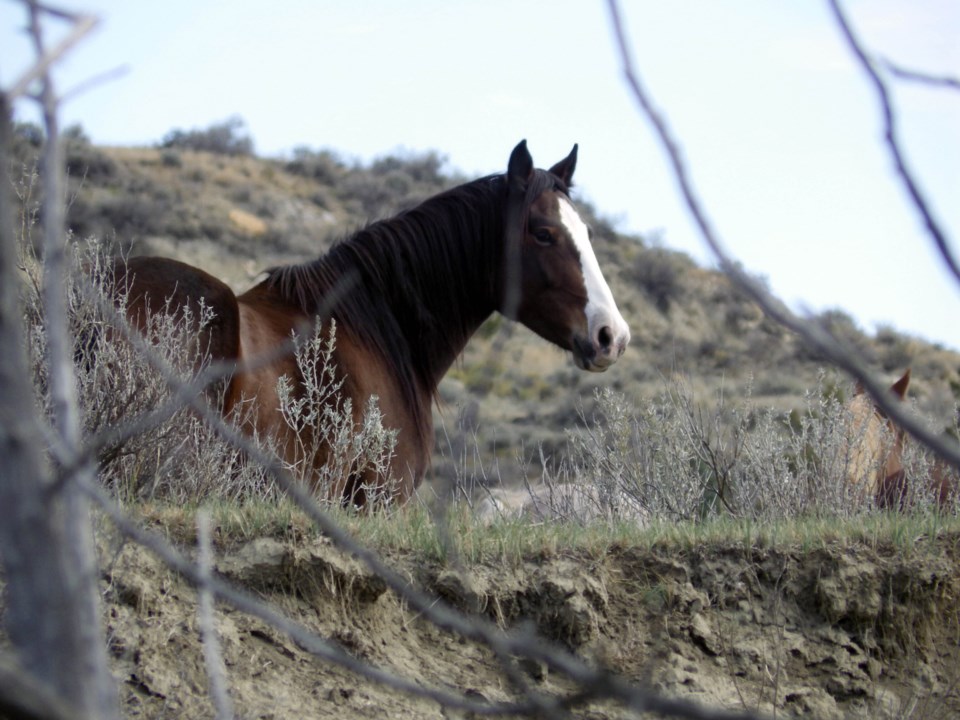BISMARCK, N.D. (AP) — Wild horses will stay in North Dakota's Theodore Roosevelt National Park amid fears from advocates that park officials would remove the beloved animals from the rugged badlands landscape, a key lawmaker said Thursday.
Republican U.S. Sen. John Hoeven said he has secured a commitment from the National Park Service to maintain wild horses in the park, though the number remains to be determined. Roughly 200 horses now roam the park.
Hoeven said the Park Service will abandon its proposed removal of the horses under an environmental review process begun in 2022 and will continue to operate under an existing 1978 environmental assessment that calls for a reduction in their numbers.
“They’ve committed to me that we will have a thoughtful and inclusive discussion on how many horses they keep in the park,” Hoeven told The Associated Press. There is no timeline on that, he said.
In a statement, the park said its decision to terminate the review “was made after careful consideration of the information and public comment received during the (environmental assessment) process.” In a text message, park officials acknowledged an email seeking comment but didn't immediately provide one.
Park visitors, much to their delight, often encounter the horses while driving or hiking in the rolling, colorful badlands where a young, future President Theodore Roosevelt hunted and engaged in cattle ranching in the 1880s in what was then Dakota Territory.
“People love horses,” Hoeven said. “And where do you go to see wild horses? I mean, it’s not like an easy thing to do, and most people don’t have horses, and they love the idea of wild horses. They see it as part of our heritage in America.”
Earlier Thursday, Hoeven's office said in a statement the decision "will allow for a healthy herd of wild horses to be maintained at the park, managed in a way to support genetic diversity among the herd and preserve the park’s natural resources.”
The horses roam the park’s South Unit near the Western tourist town of Medora. In 2022, park officials began the process of crafting a “livestock plan” for the horses as well as about nine longhorn cattle in the park’s North Unit near Watford City. Park officials have said that process aligned with policies to remove non-native species when they pose a potential risk to resources.
“The horse herd in the South Unit, particularly at higher herd sizes, has the potential to damage fences used for wildlife management, trample or overgraze vegetation used by native wildlife species, contribute to erosion and soil-related impacts ... and compete for food and water resources,” according to a Park Service environmental assessment from September 2023.
Proposals included removing the horses quickly or gradually or taking no action. Park Superintendent Angie Richman has said the horses, even if they ultimately stay, would still have to be reduced to 35-60 animals under the 1978 environmental assessment. The park will continue to manage the longhorns as done previously, according to Hoeven’s office.
Thousands of people made public comments during the Park Service review, the vast majority of them in support of keeping the horses. North Dakota’s Republican-controlled Legislature made its support official in a resolution last year. Gov. Doug Burgum offered state help to maintain the horses.
The Park Service reached out to the five tribal nations in North Dakota to find out if the tribes want to be involved in managing the horses, Hoeven said. The Standing Rock Sioux Tribe indicated interest, he said.
The senator’s announcement comes after Congress passed and President Joe Biden recently signed an appropriations bill with a provision from Hoeven strongly recommending the Park Service maintain the horses. The legislation signaled that funding to remove the horses might be denied.
Chris Kman, president of Chasing Horses Wild Horse Advocates, said she was in tears when she read Hoeven's announcement. She said she plans to pursue federal protection for the horses and explore potential state legislation.
“If they don't have federal protection, then they're at the mercy of the next administration that comes in or whatever policy they want to pull out and cite next time and try to get rid of the horses again,” Kman said by phone from the park.
The horses descend from those of Native American tribes and area ranches and from domestic stallions introduced to the park in the late 20th century, according to Castle McLaughlin, who researched the horses as a graduate student while working for the Park Service in North Dakota in the 1980s.
Jack Dura, The Associated Press



